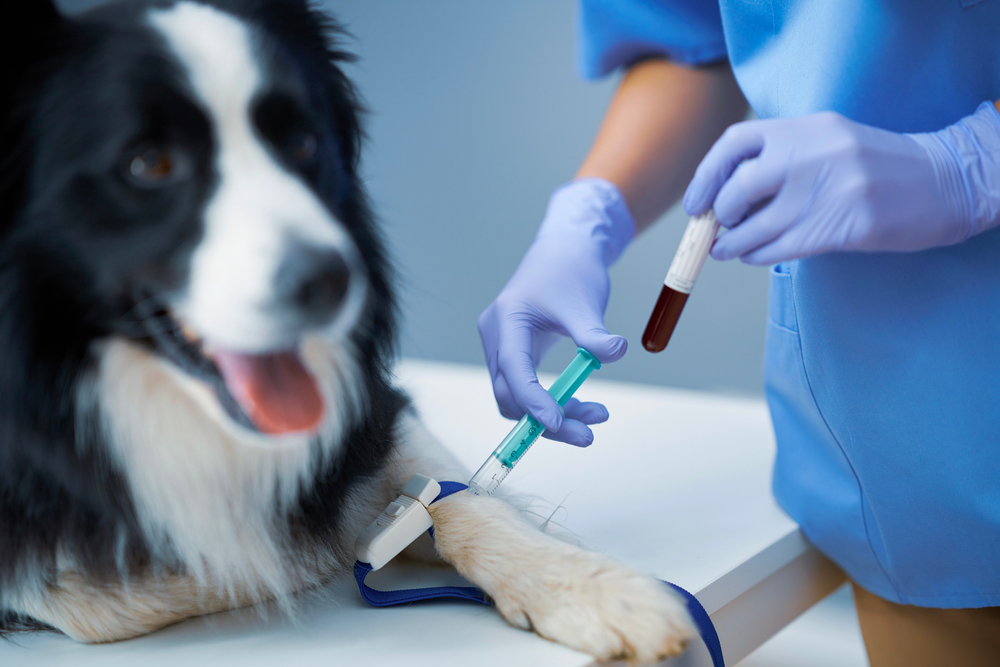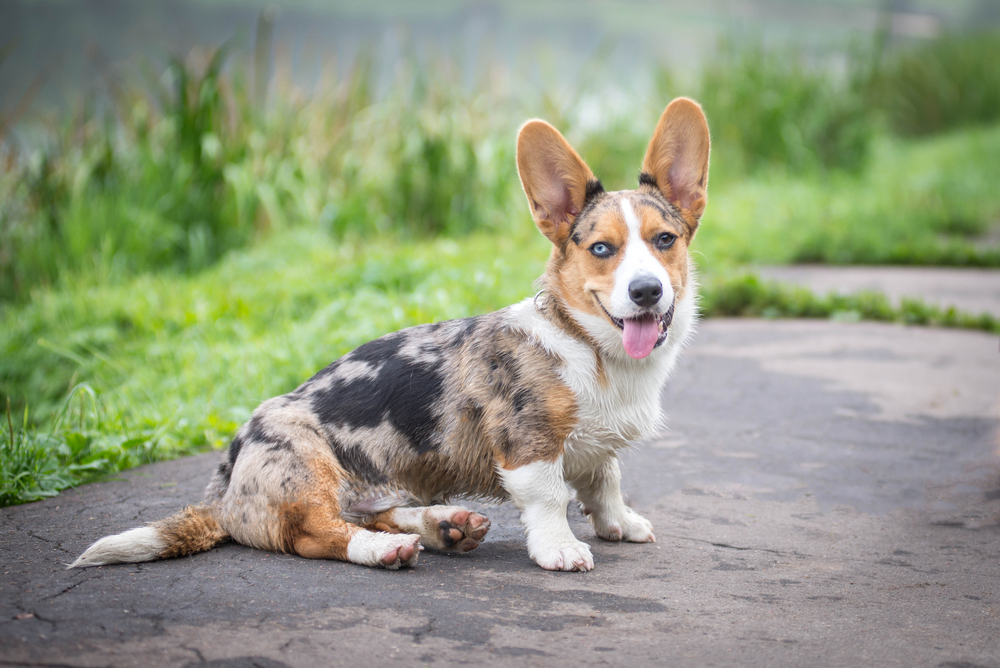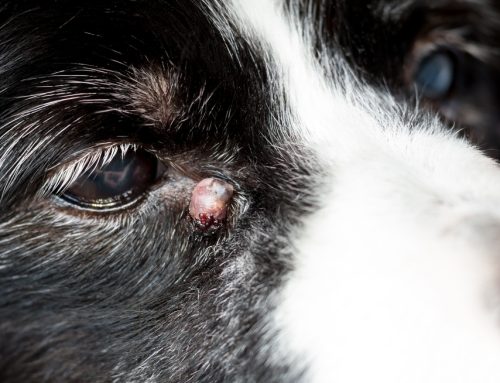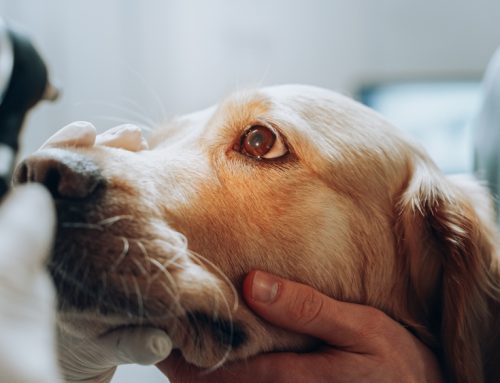Many ophthalmic diseases are inherited, but research has only scratched the surface to uncover the responsible genes. However, science does have a good handle on progressive retinal atrophy (PRA) and retinal dysplasia conditions in dogs. Any dog can develop this blinding condition, and although the genetic basis is not always clear, specific gene mutations have been detected in certain dog breeds that enable breeders and veterinarians to better understand them.
Veterinary Vision Center knows that breed plays a large role in disease development and wants pet owners and breeders to better understand their dogs’ risk. Here is an overview of PRA and how different variants can affect certain dog breeds.
What is progressive retinal atrophy in dogs?
Progressive retinal atrophy (PRA) is a painless eye condition that causes the retina (i.e., the cell layer that lines the eye’s interior back wall) to degenerate. The retina contains rods that assist with vision in low light and detect movement, and cones, which help with vision in daylight and detect color. These cells work together to transmit visual signals through the optic nerve to the brain, creating the image your dog sees. The cones and rods degenerate slowly in PRA, gradually leading to complete blindness.
What are PRA signs in dogs?
Because PRA degeneration occurs slowly, pet owners may not notice at first. In most PRA types, the rods break down first, leading to night blindness as the first sign, although a few rare types may cause day blindness. You may notice that dogs are hesitant to navigate in low light or go outside at night, and exhibit increased reflectivity (i.e., “eye shine” from your dog’s eyes) during the early stages, and then cataracts can form later. Vision will continue to deteriorate over months to years, causing dogs to bump into objects or get lost in unfamiliar places.
True PRA usually occurs in middle to older age, between 3 and 9 years old. A few related conditions, called retinal dysplasias, are early onset and can cause blindness between 1 and 2 years of age. Most dogs acclimate to slow vision loss and learn to use their other senses to navigate. PRA is not painful and does not affect life expectancy or quality, which is a comfort for most pet owners.
How do veterinary ophthalmologists diagnose and treat PRA?
A veterinary ophthalmologist can diagnose PRA based on an eye examination and a history of progressive vision loss. Retinal thinning visible on fundic (i.e., retinal) examination confirms the diagnosis. The veterinarian may order an electrical retinal function test if they cannot visualize the retina, which will confirm decreased or absent function.
Genetic testing is not helpful for a PRA diagnosis, but screening young or breeding dogs can identify genes responsible for causing specific variants. The screening test can tell whether your dog will likely develop PRA later in life, but a negative test result does not completely eliminate the possibility. No treatments can stop, prevent, or slow PRA progression, but an eye vitamin called Ocu-Glo may help prevent cataract development.
Which breeds are predisposed to PRA development?
Any dog can develop or inherit a gene mutation that leads to PRA, but certain types occur more frequently in specific dog breeds. Here are a few of the many possible types and the breeds they commonly affect:
- Rod-cone dysplasia type 1 — Causes blindness in Irish setters by 1 year of age
- Rod-cone dysplasia type 2 — Causes blindness in collies by 6 to 8 months old
- Rod-cone dysplasia type 3 — Causes blindness in Cardigan Welsh corgis and Chinese crested dogs around 1 year old, but some dogs retain vision until age 3 to 4 years
- Rod-cone dysplasia type 4 — Age of onset ranges from 2 to 11 years and commonly affects Australian cattle dogs, Tibetan terriers, Gordon setters, Irish setters, English setters, Polish lowland sheepdogs, and standard poodles
- Early retinal degeneration — Causes blindness in Norwegian elkhounds by 18 months of age
- Photoreceptor dysplasia — Causes early onset disease in miniature schnauzers and Belgian shepherds
- Cone degeneration — Causes day blindness in Alaskan malamute and German shorthaired pointer puppies
- Cone-rod dystrophy type 1 or 2 — Causes blindness by 1 to 2 years in miniature longhaired dachshunds, lhasa apsos, Newfoundlands, miniature schnauzers, beagles, American staffordshire terriers, and American pitbull terriers
- Multifocal retinopathy — Causes late-onset, slowly progressive disease in the coton de tulear, labradoodle, great Pyrenees, English mastiff, cane corso, borzoi, and Lapponian herder breeds
- Progressive rod-cone degeneration — Causes late but variable disease onset, most commonly in golden retrievers and Labrador retrievers, but can also affect the poodle, cocker spaniel, Portuguese water dog, Chesapeake Bay retriever, Australian cattle dog, and American Eskimo dog
- X-linked PRA — Affects only male Siberian Huskies, samoyeds, and border collies, with onset around 2 to 4 years of age
- Dominant PRA — Only one gene copy is needed to cause disease, in contrast with the two copies required for many other diseases. English mastiff and bullmastiff breeds are completely blind by age 2.
Should I test my dog for PRA?

Genetic testing for PRA and several other common genetic diseases is often included in breed identification tests, such as Wisdom Panel and Embark tests. These general screening tests may not identify every possible gene variant, but are sufficient for pets who are not involved in breeding. A positive test may alert you to closely monitor your dog’s eye health, but you cannot prevent the disease from developing. Dogs slated for breeding should undergo specific testing available for the variants that affect their breed and be removed from the breeding program if they test positive.
Your pet’s breed impacts their genetics and health, including vision and eye conditions. Our Veterinary Vision Center team can provide breeding certification exams, check puppy litters for early disease signs, and diagnose late-onset PRA in adult dogs. If you notice your pet’s vision deteriorating, contact us to schedule a visit, or for a routine eye examination, especially for breeds at high risk for developing PRA.







Leave A Comment